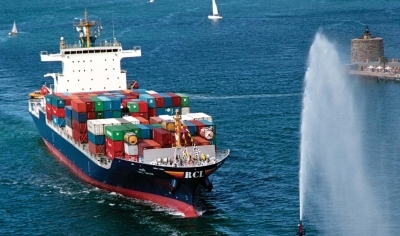Citing figures from his company, Looten said from 2015 to 2020, China’s exports to Southeast Asia are expected to see the highest growth at 4.4% per annum, followed by Africa at 3% and the Middle East and South Asia at 2.7%.
While emphasising that volumes to traditional export markets such as North America and Europe will remain important, Looten pointed out that these new trade patterns will lead to more growth on shorter trade lanes in Asia with accompanying effects on the lines.
“China to Southeast Asia trade is growing so that means in terms of ton-miles, that’s not very good news for the carriers,” he said.
This will have two main consequences, he noted. Firstly, ship sizes will get smaller as the huge mega-vessels will not be needed and will in fact be inapproprate for the short-haul trades that will see the most growth.
Secondly, the transhipment business would also be a little under threat because it makes less sense on short haul routes as shippers veer more towards point-to-point routings.
Consequently the hub and spoke model could be overturned, Looten said. “If all the growth is in shorter trade lanes in future, hub and spoke could become a thing of the past,” he said.
In addition, because of slow steaming and the continuing excess capacity from the megacarriers, even mainline carriers are moving towards more direct calls as well. “Instead of what was thought that these big ships would lead to less port calls, they could lead to more because with so much capacity it makes sense to fill up the ships by going to more ports,” Looten said.
“There are a lot of changes happening in China and you should try and make sense of it all and deal with it from your own perspective,” Looten concluded.
Copyright Ships & Ports Ltd. Permission to use quotations from this article is granted subject to appropriate credit given to www.shipsandports.com.ng as the source.

